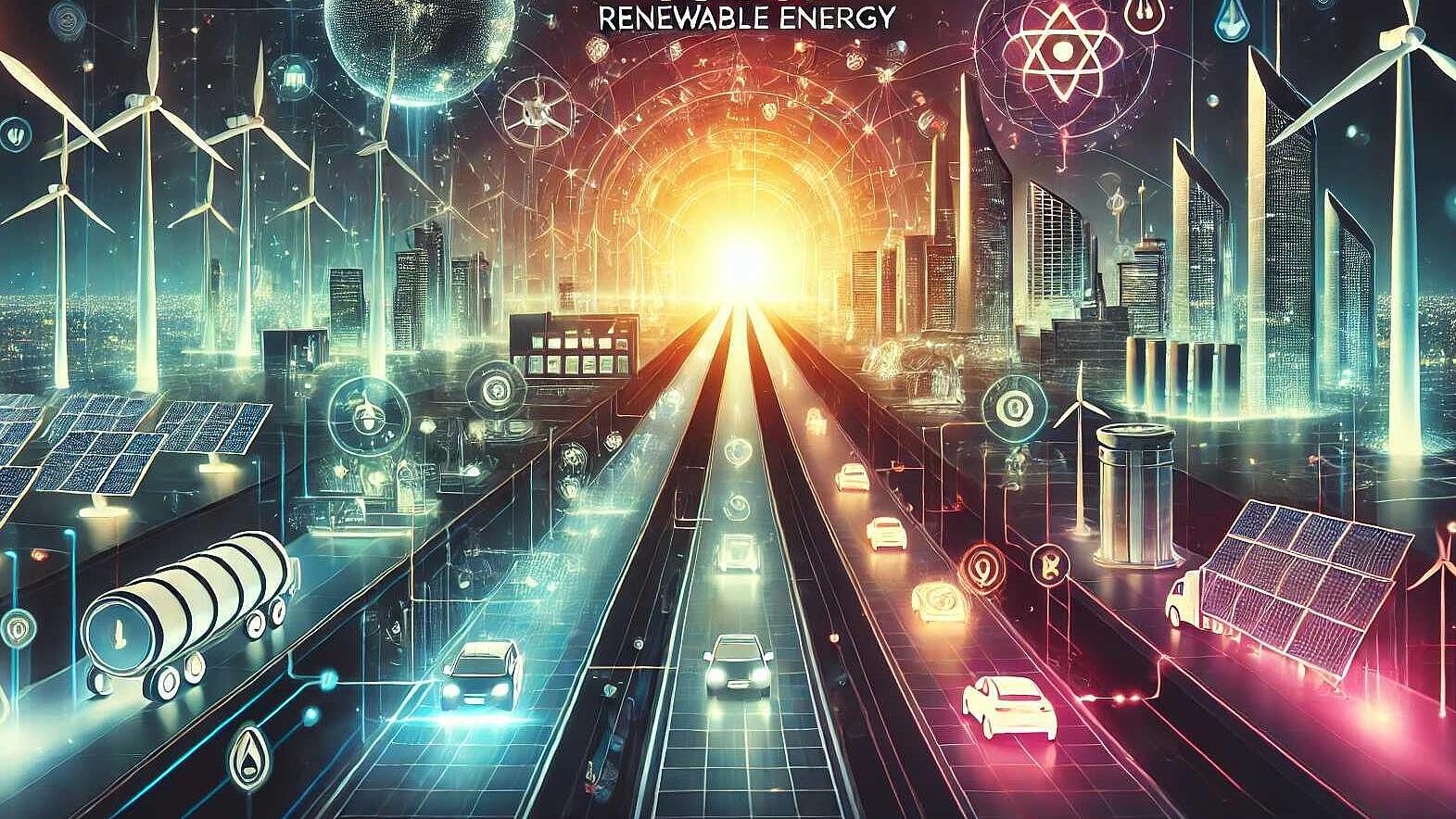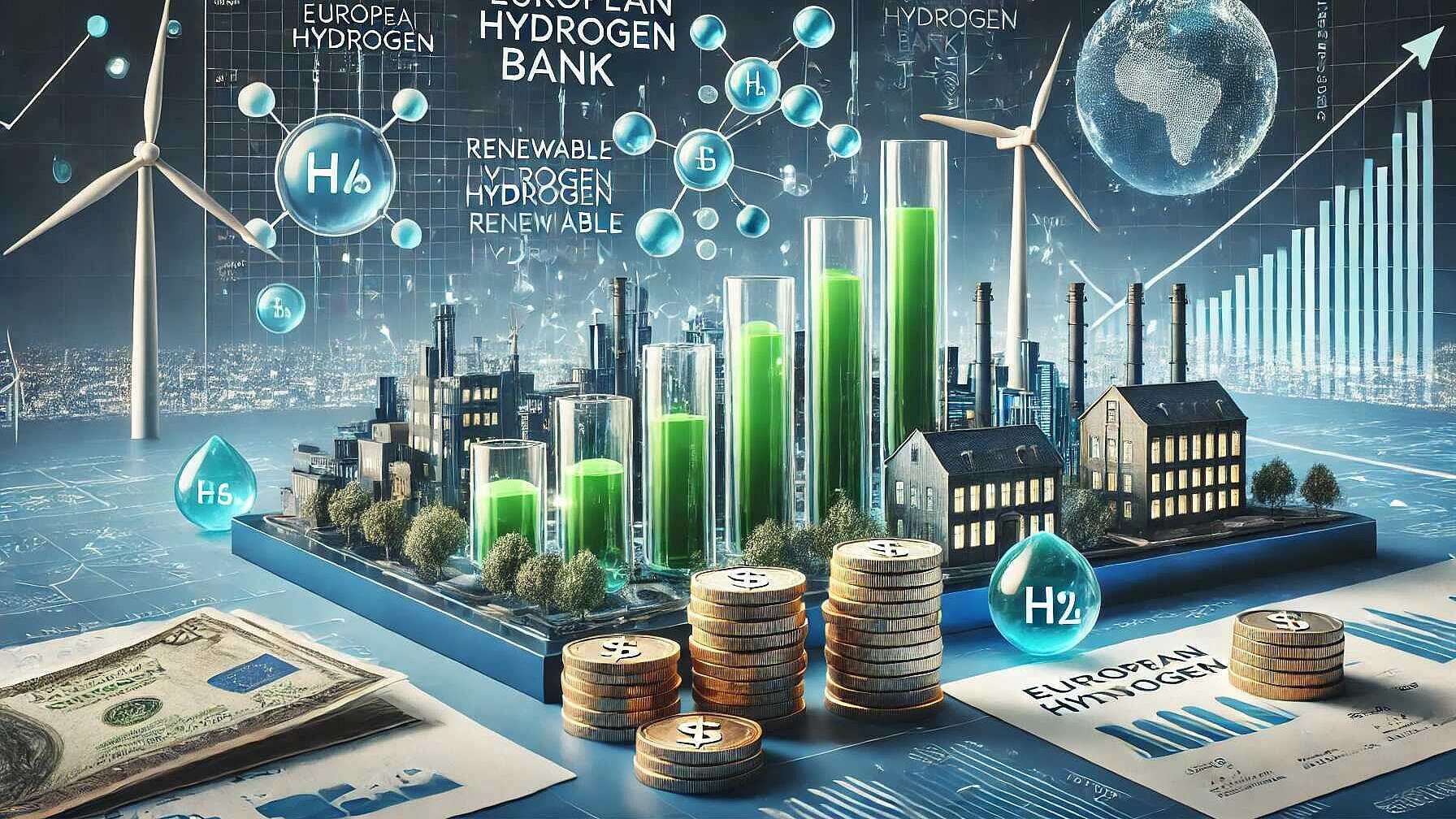 Erneuerbare Energie
Erneuerbare EnergieDie Revolution der erneuerbaren Energien: Energie für unsere Zukunft
Zusammenfassung
Das Papier untersucht die Machbarkeit und die Auswirkungen des Übergangs zu einem System, das bis 2050 zu 100 % aus erneuerbaren Energien besteht, im Einklang mit dem Ziel des Pariser Abkommens, die globale Erwärmung auf 1,5 °C über dem vorindustriellen Niveau zu begrenzen. Die wichtigsten Ergebnisse zeigen, dass die Elektrifizierung für diesen Übergang von zentraler Bedeutung ist, wobei der Anteil der Elektrizität am Gesamtenergieverbrauch von 20 % auf über 90 % steigen könnte. Es wird erwartet, dass der Verkehrssektor erheblich elektrifiziert wird, insbesondere durch die Einführung von Elektrofahrzeugen.
Solar- und Windenergie sind die wichtigsten erneuerbaren Energiequellen, die den Prognosen zufolge bis zu 69 % bzw. 45 % der gesamten Energieversorgung liefern werden. Dieser Ausbau könnte bis 2050 rund 134 Millionen Arbeitsplätze schaffen. Allerdings erfordert die schwankende Natur der Solar- und Windenergie Fortschritte in der Netztechnologie, um Stabilität und Zuverlässigkeit zu gewährleisten.
Energiespeicher, einschließlich Batterien und Wasserkraftwerke, werden als wesentlich angesehen, um Ungleichgewichte zwischen Angebot und Nachfrage auszugleichen. Grüner Wasserstoff wird als entscheidendes Element für die Dekarbonisierung der Industrie und des Schwerverkehrs hervorgehoben. Für Heizung und Kühlung schlägt das Papier vor, verstärkt auf Wärmepumpen und solarthermische Technologien zu setzen.
Die sozioökonomischen Vorteile einer Umstellung auf erneuerbare Energien werden hervorgehoben, mit dem Potenzial für die Schaffung von Arbeitsplätzen und gesundheitlichen Vorteilen durch die Reduzierung der Luftverschmutzung und der damit verbundenen Todesfälle. Um diese Ergebnisse zu erreichen, empfiehlt das Papier politische Maßnahmen wie die Verpflichtung zu erneuerbaren Energien, die Priorisierung von Energieeffizienz, die Verbesserung der Elektrifizierung des Sektors, Investitionen in die Energieinfrastruktur und die Förderung der internationalen Zusammenarbeit.
Kompletten Artikel anzeigen
Die Revolution der erneuerbaren Energien: Energie für unsere Zukunft
In einer Welt, die mit dem Klimawandel und Fragen der Energiesicherheit zu kämpfen hat, war der Übergang zu erneuerbaren Energien noch nie so wichtig wie heute. Jüngste Studien haben gezeigt, dass ein zu 100 % aus erneuerbaren Energien bestehendes Energiesystem nicht nur ein ferner Traum ist, sondern eine erreichbare Realität, die unserem Planeten und unserer Gesellschaft zahlreiche Vorteile bringen könnte. Lassen Sie uns untersuchen, wie diese Revolution der erneuerbaren Energien unsere Energielandschaft umgestalten könnte und was sie für die Zukunft bedeutet.
Der Weg zu 100 % erneuerbarer Energie
Mehrere prominente Szenarien wurden von führenden Institutionen entwickelt, darunter die Lappeenranta-Lahti University of Technology (LUT), die University of Technology Sydney (UTS) und die Stanford University. Diese Szenarien skizzieren, wie wir bis 2050 ein vollständig erneuerbares Energiesystem erreichen können, das mit dem Ziel des Pariser Abkommens übereinstimmt, die globale Erwärmung auf 1,5 °C über dem vorindustriellen Niveau zu begrenzen.
Elektrifizierung: Die wichtigste Triebkraft
Eine der auffälligsten Gemeinsamkeiten aller Szenarien ist die deutliche Zunahme der Elektrifizierung. Bis 2050 soll der Anteil der Elektrizität am gesamten Endenergieverbrauch zwischen 50 % und mehr als 90 % liegen, verglichen mit etwa 20 % heute. Diese massive Verlagerung hin zur Elektrifizierung wird verschiedene Sektoren umfassen, darunter Verkehr, Industrie und Gebäude.
Die Elektrifizierung des Verkehrs ist ein besonders wichtiger Aspekt dieses Übergangs. Es ist zu erwarten, dass Fahrzeuge mit Verbrennungsmotoren rasch durch Elektrofahrzeuge ersetzt werden, was zu einer saubereren Luft in unseren Städten und einer geringeren Abhängigkeit von fossilen Brennstoffen führen wird.
Sonne und Wind: Das dynamische Duo
Im Mittelpunkt dieser Revolution der erneuerbaren Energien stehen die Solar- und Windtechnologien. Es wird erwartet, dass diese beiden Kraftpakete bis zum Jahr 2050 den Energiemix dominieren werden, und zwar dank ihrer rasch sinkenden Kosten und des technologischen Fortschritts. Die Solarkapazität könnte zwischen 33 % und 69 % der gesamten Energieversorgung ausmachen, während der Anteil der Windenergie zwischen 16 % und 45 % liegen dürfte.
Der Ausbau dieser Technologien wird nicht nur saubere Energie liefern, sondern auch zahlreiche Arbeitsplätze schaffen. So geht das Global 100% RE Scenario davon aus, dass der Sektor der erneuerbaren Energien bis 2050 etwa 134 Millionen Arbeitsplätze schaffen könnte, die vor allem durch die Wertschöpfungsketten der erneuerbaren und nachhaltigen Technologien entstehen.
Bewältigung von Herausforderungen: Netzflexibilität und Speicherung
Der Übergang zu einem hohen Anteil variabler erneuerbarer Energiequellen wie Solar- und Windenergie wird erhebliche Änderungen an unserer Energieinfrastruktur erfordern. Intelligente und hochgradig digitalisierte Netze werden unerlässlich sein, um die Variabilität der erneuerbaren Energiequellen zu steuern und eine stabile und zuverlässige Energieversorgung zu gewährleisten.
Die Energiespeicherung wird in diesem neuen System eine entscheidende Rolle spielen. Verschiedene Speichertechnologien, von Batterien bis hin zu Pumpspeichern, werden benötigt, um Angebot und Nachfrage auf verschiedenen Zeitskalen auszugleichen - von stündlich bis saisonal. Das UTS 1,5°C-Szenario beispielsweise unterstreicht den Bedarf an beträchtlichen kurzfristigen Speicherkapazitäten, darunter über 244 GW an Pumpspeicherkraftwerken und 12 GW an Batteriespeichern bis 2030.
Grüner Wasserstoff: Der Spielveränderer
Grüner Wasserstoff erweist sich in allen Szenarien als wichtige Komponente, insbesondere für die Dekarbonisierung schwer abbaubarer Sektoren wie der Schwerindustrie und des Fernverkehrs. Durch Elektrolyse mit Hilfe von erneuerbarem Strom hergestellt, könnte grüner Wasserstoff wesentlich zum Ausgleich von Energieangebot und -nachfrage beitragen.
Das 1,5°C-Szenario von IRENA geht davon aus, dass Wasserstoff und seine Derivate dazu beitragen könnten, bis 2050 bis zu 12 % der Kohlenstoffemissionen in der Industrie und bis zu 26 % im Verkehr zu verringern. Die Verwirklichung dieses Potenzials erfordert jedoch erhebliche Investitionen in die Elektrolyseurtechnologie, um grünen Wasserstoff wirtschaftlich tragfähig und leicht verfügbar zu machen.
Heizung und Kühlung: Ein neuer Ansatz
Die Revolution der erneuerbaren Energien wird auch die Art und Weise verändern, wie wir unsere Gebäude heizen und kühlen. Es wird erwartet, dass Wärmepumpen eine wichtige Rolle bei der Elektrifizierung der Heizung und Kühlung von Haushalten spielen werden. In Märkten, in denen solare Warmwassersysteme bereits weit verbreitet sind, werden diese auch weiterhin eine wichtige Rolle bei der Reduzierung des Strombedarfs spielen.
Für industrielle Hochtemperaturanwendungen, die schwer zu elektrifizieren sind, schlagen die Szenarien verschiedene Alternativen vor. Dazu gehören solarthermische Hochtemperaturtechnologien sowie der Einsatz von Wasserstoff und synthetischen Energieträgern.
Sozioökonomischer Nutzen: Über den Klimaschutz hinaus
Der Übergang zu 100 % erneuerbaren Energien dient nicht nur der Bekämpfung des Klimawandels, sondern verspricht auch erhebliche sozioökonomische Vorteile. Alle Szenarien heben die positiven Auswirkungen auf die Beschäftigung und die Schaffung von Arbeitsplätzen hervor. So geht das 1,5°C-Szenario von IRENA davon aus, dass ein veränderter Energiesektor bis 2050 etwa 122 Millionen Arbeitsplätze schaffen könnte, davon 43 Millionen direkt im Bereich der erneuerbaren Energien.
Darüber hinaus wird erwartet, dass die Umstellung auf erneuerbare Energien erhebliche gesundheitliche Vorteile mit sich bringt. Durch den Ausstieg aus der Nutzung fossiler Brennstoffe und traditioneller Biomasse könnten wir jährlich Millionen von vorzeitigen Todesfällen aufgrund von Luftverschmutzung verhindern. Das WWS-Szenario schätzt, dass bis 2050 jedes Jahr 5,3 Millionen vorzeitige Todesfälle vermieden werden könnten.
Der Weg in die Zukunft: Politische Empfehlungen
Um diese Zukunft der erneuerbaren Energien zu verwirklichen, müssen die politischen Entscheidungsträger mutige und entschlossene Maßnahmen ergreifen. Zu den wichtigsten Empfehlungen gehören:
- Umstellung auf ein System, das zu 100 % aus erneuerbaren Energien besteht, und schrittweiser Ausstieg aus fossilen Brennstoffen
- Vorrang für Energieeffizienz zur Senkung des Gesamtenergiebedarfs
- Beschleunigung der Elektrifizierung der verschiedenen Sektoren
- Investitionen in die Infrastruktur für ein widerstandsfähiges, dezentrales und flexibles Energiesystem
- Förderung der internationalen Zusammenarbeit zur Beschleunigung der globalen Energiewende
Der Weg zu einem zu 100 % aus erneuerbaren Energien bestehenden Energiesystem ist klar, und die Vorteile sind zahlreich. Wenn wir uns zu diesem Übergang verpflichten, können wir eine sauberere, gesündere und nachhaltigere Welt für künftige Generationen schaffen. Die Revolution der erneuerbaren Energien ist nicht nur möglich, sondern für die Zukunft unseres Planeten unabdingbar.



